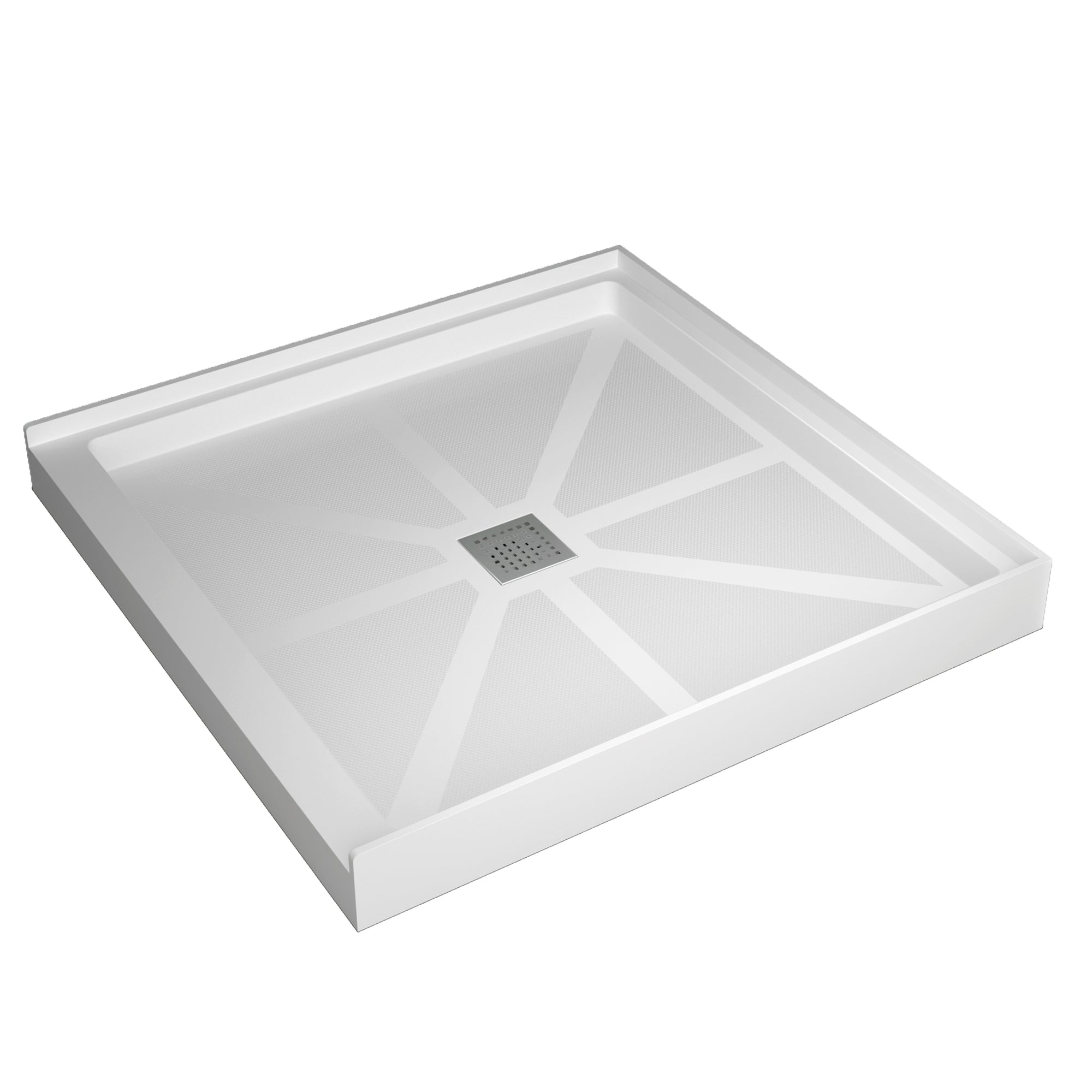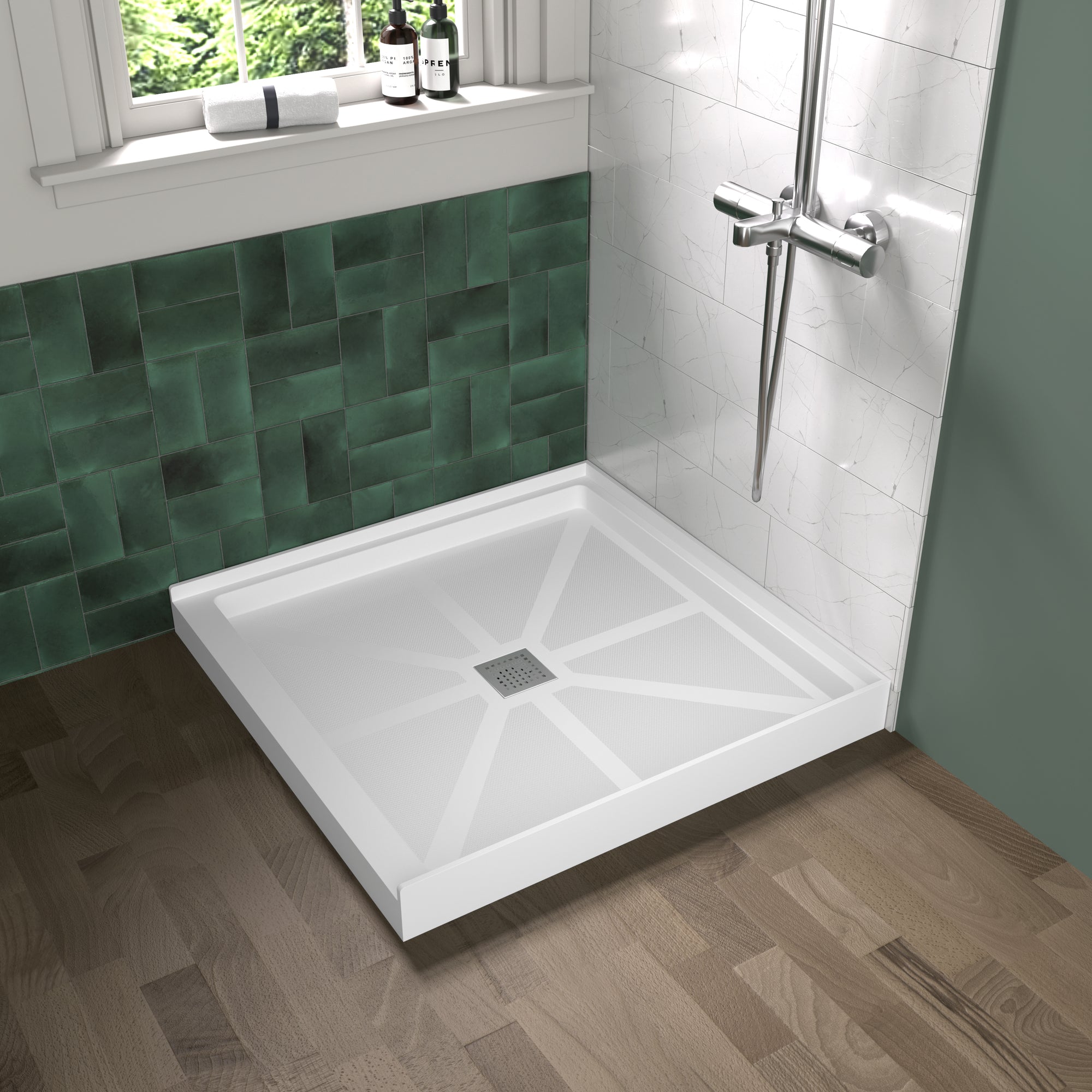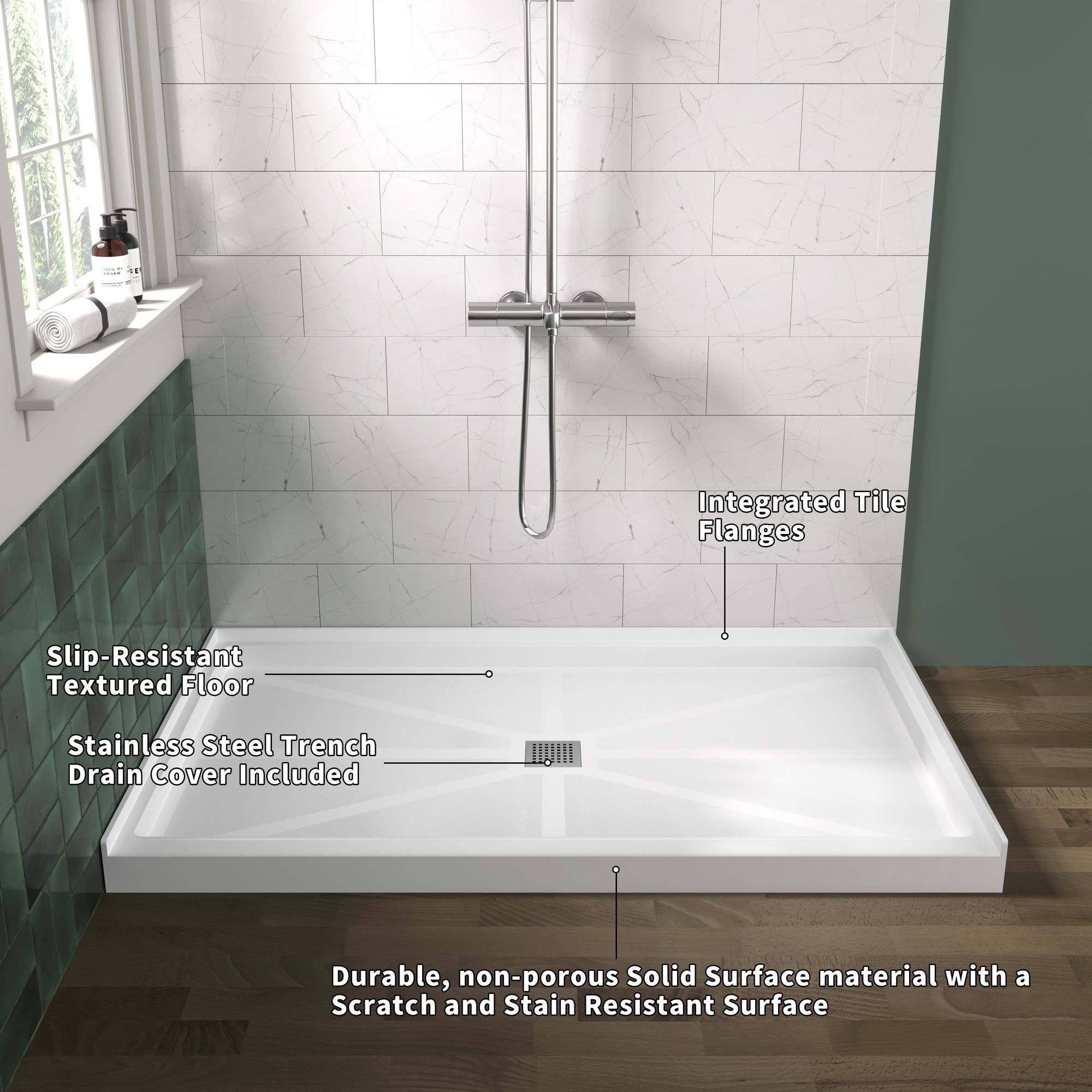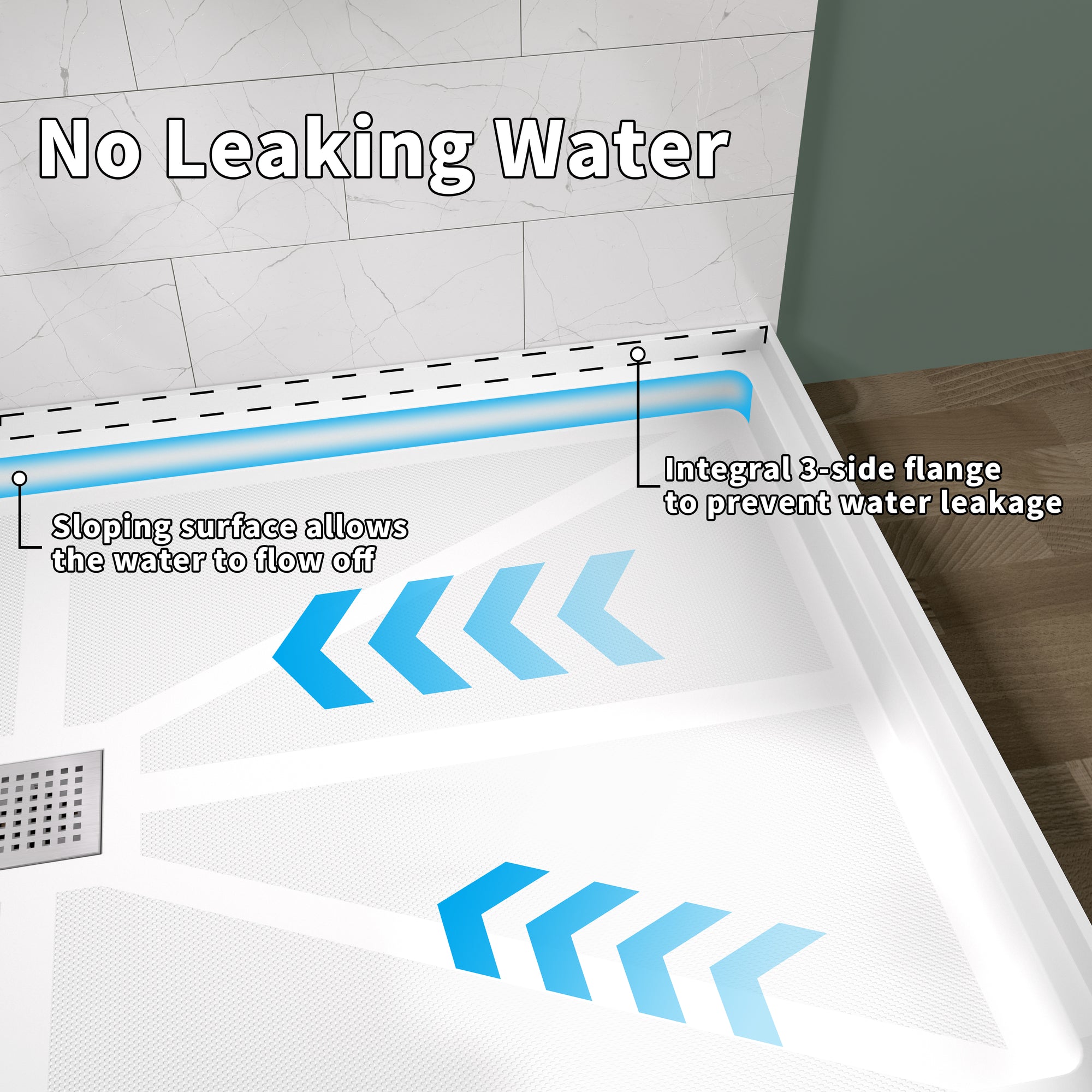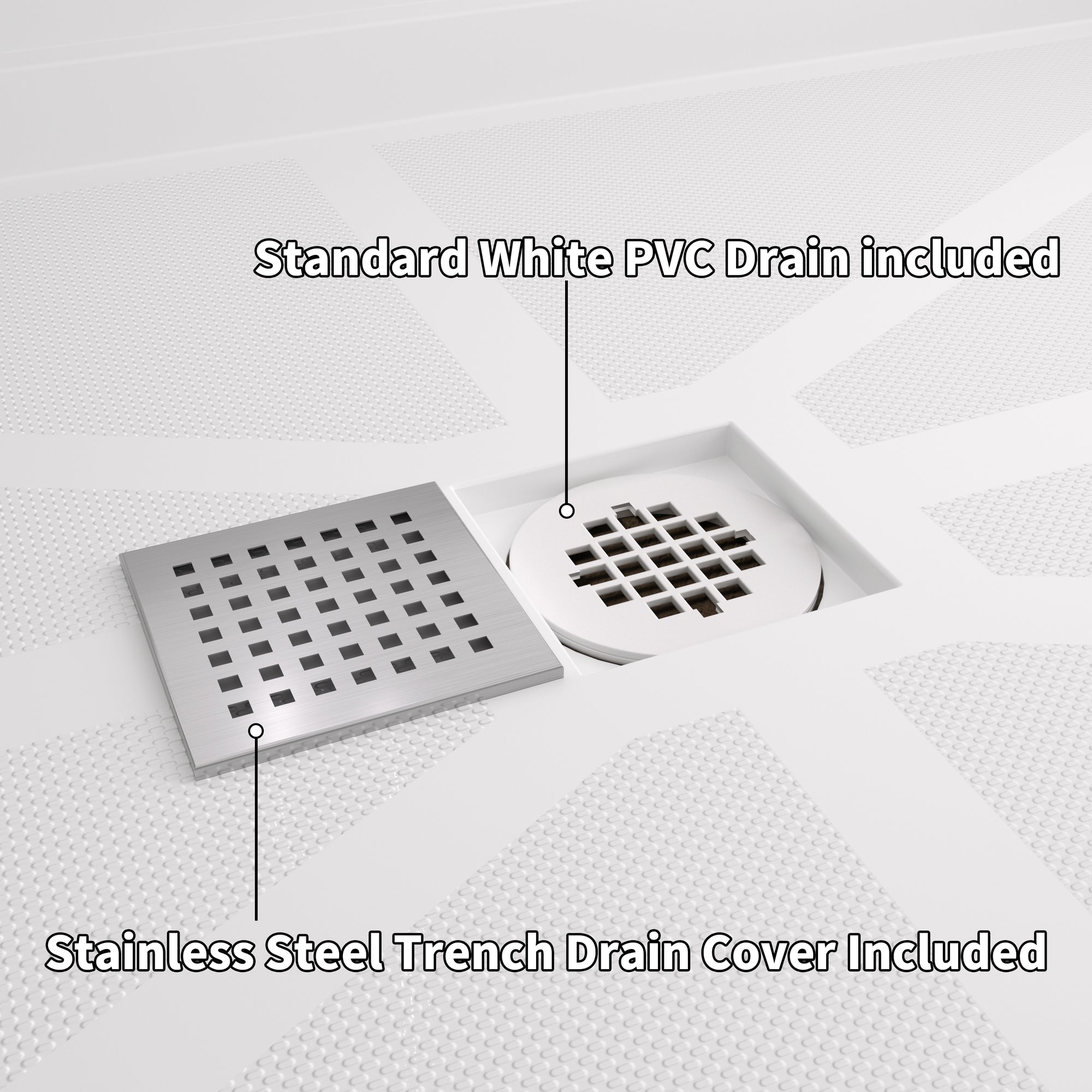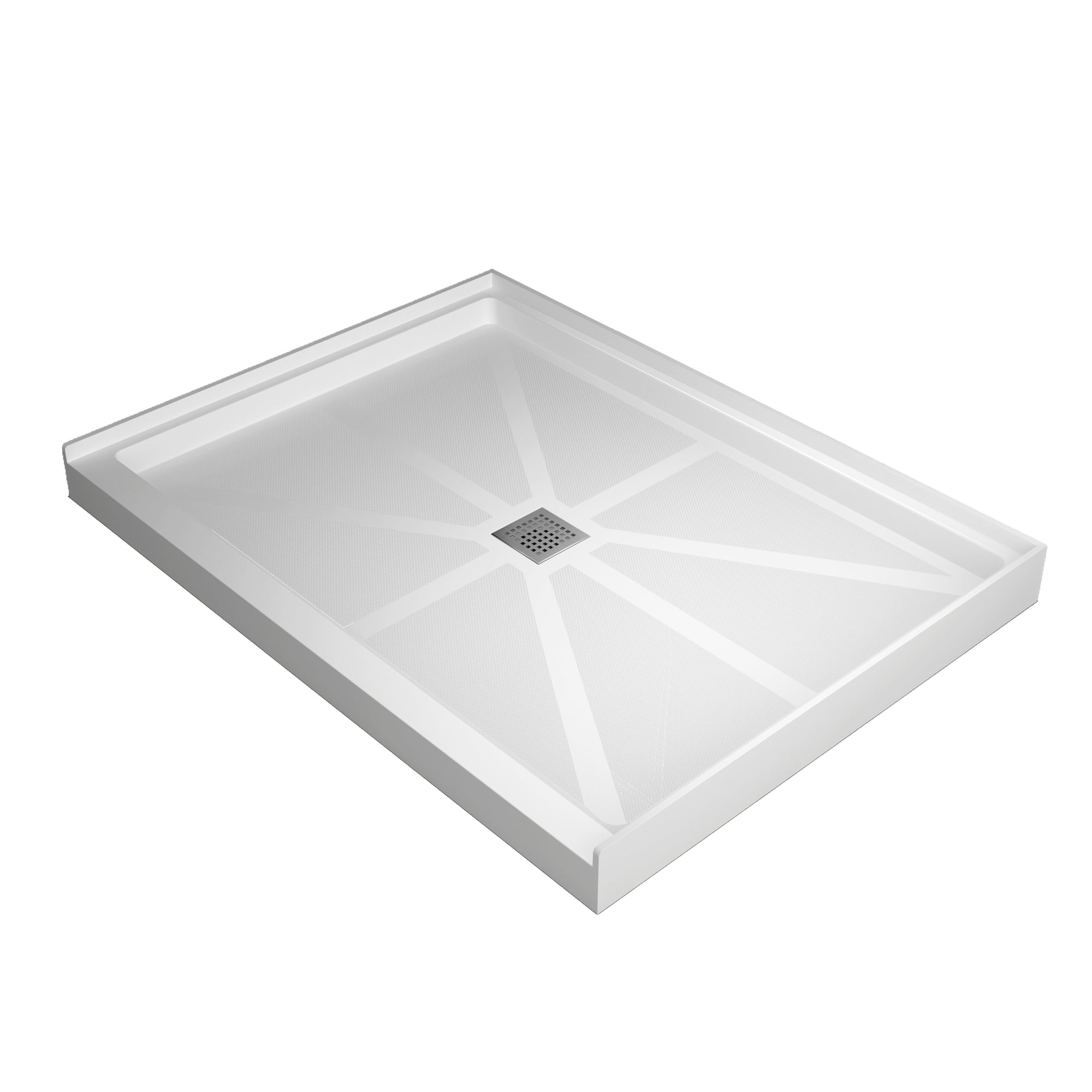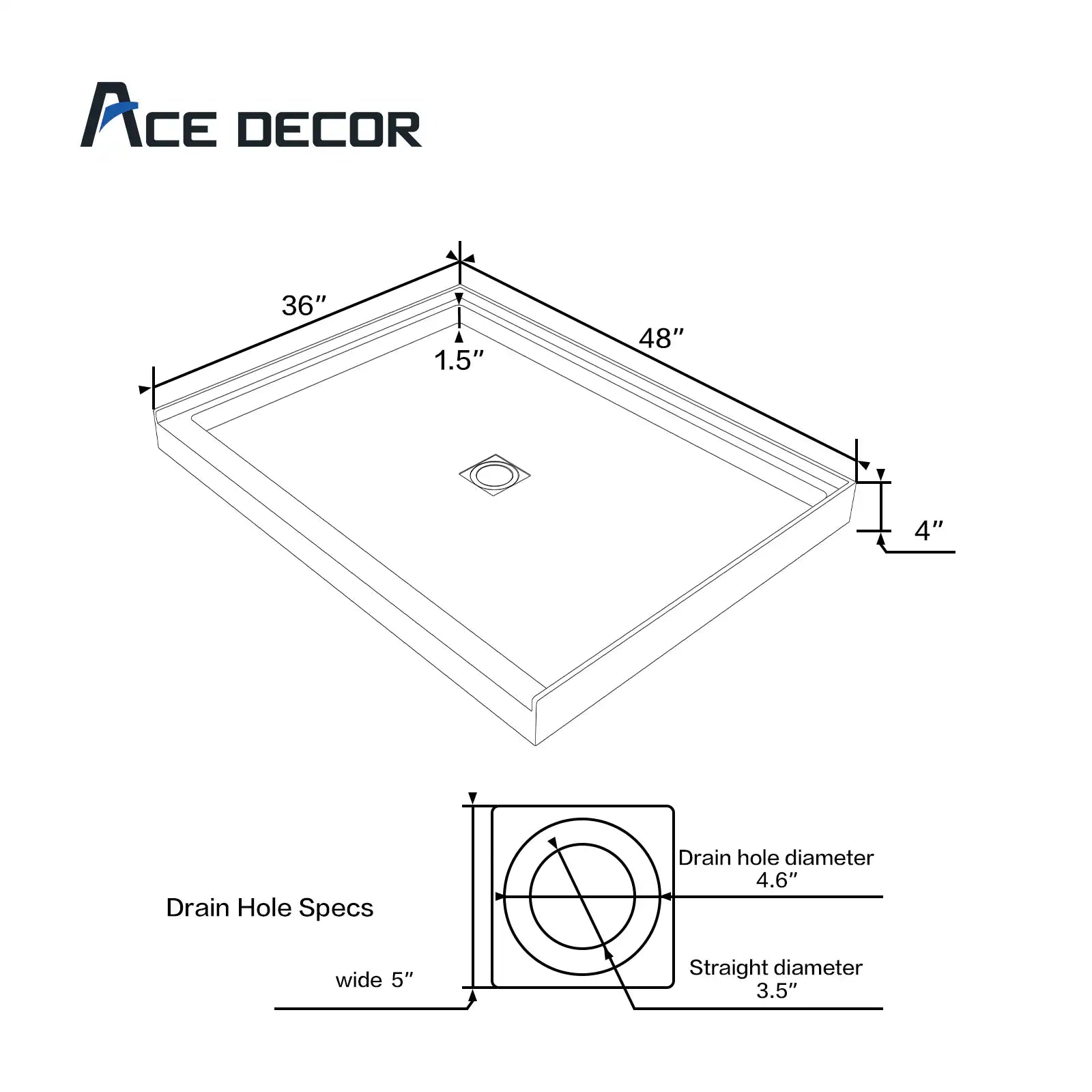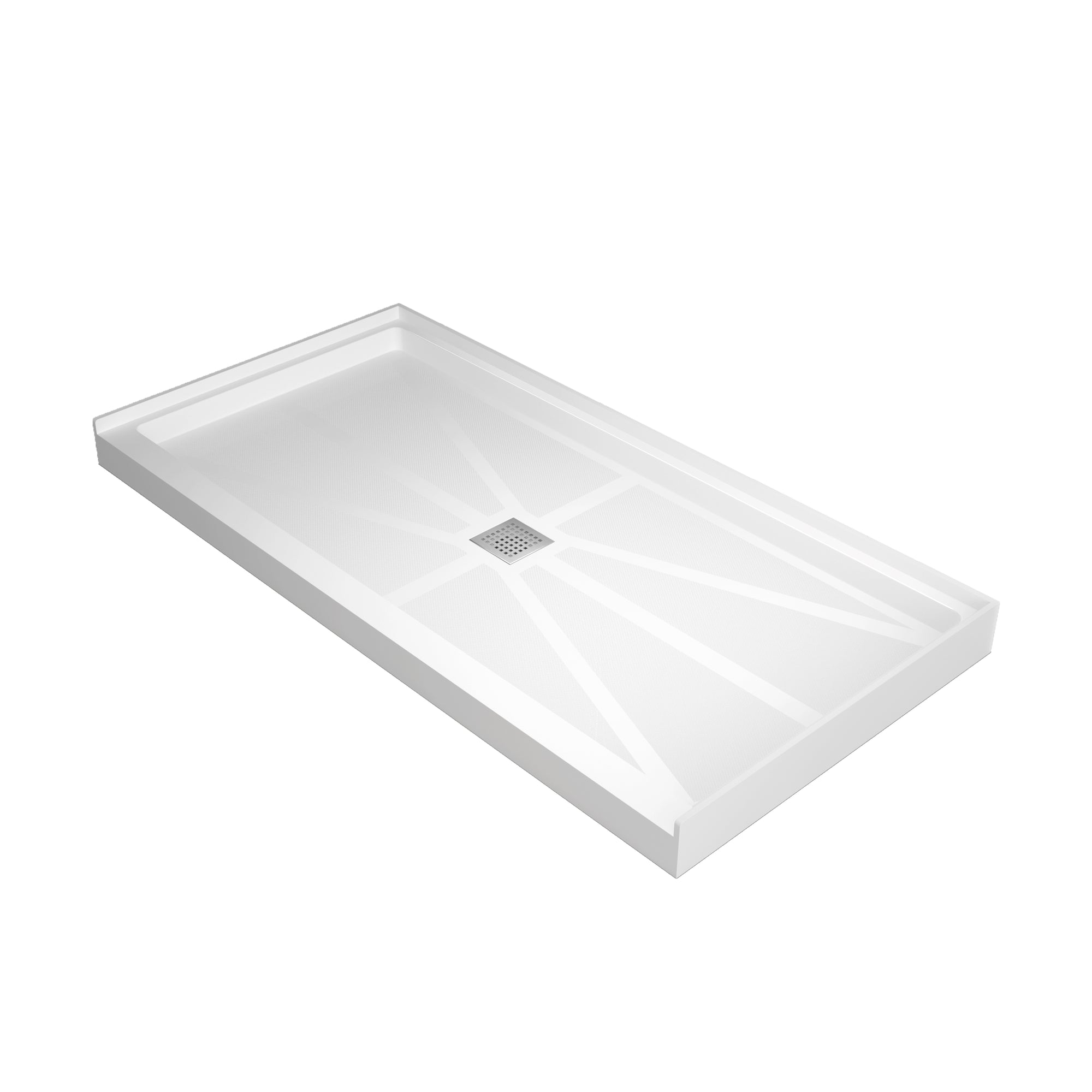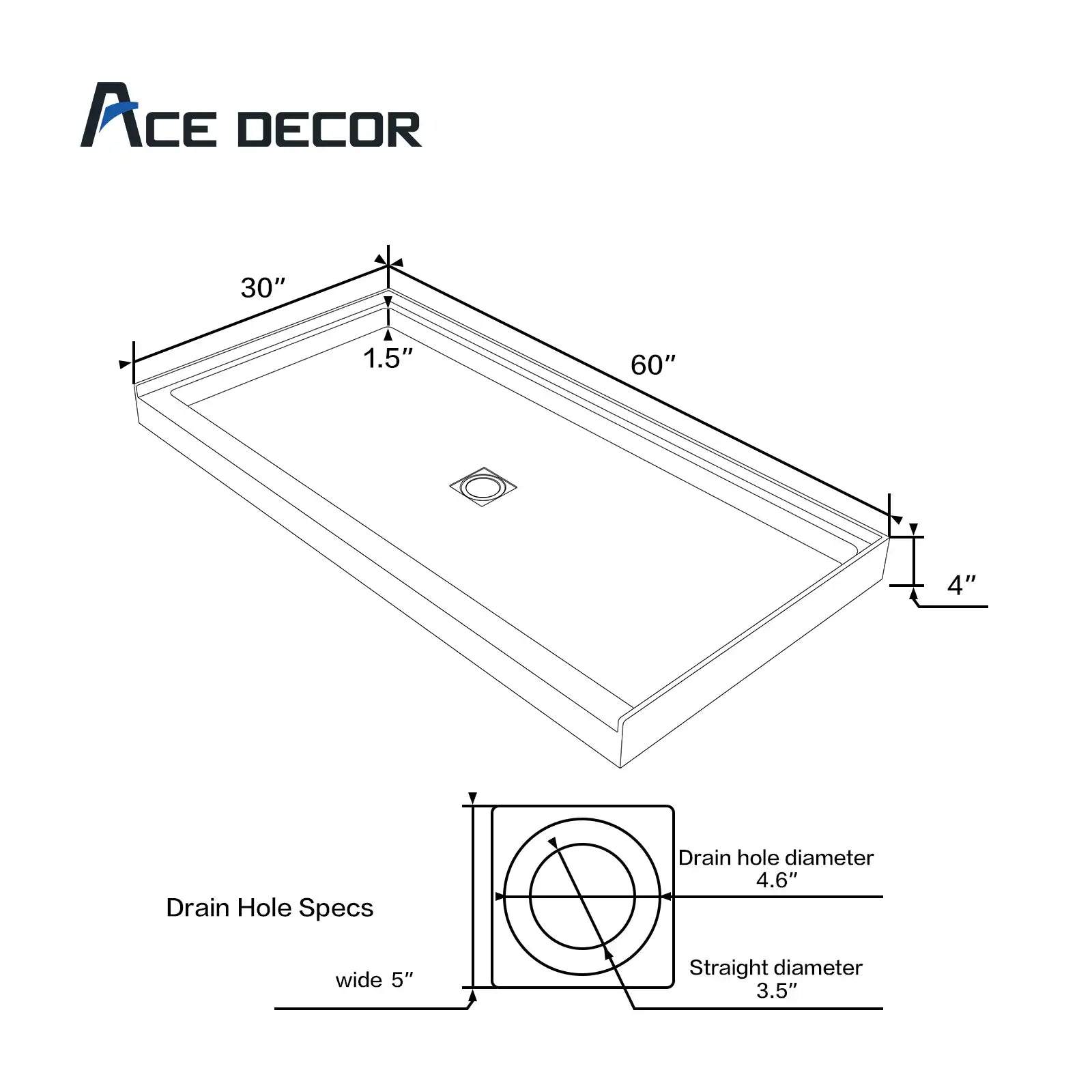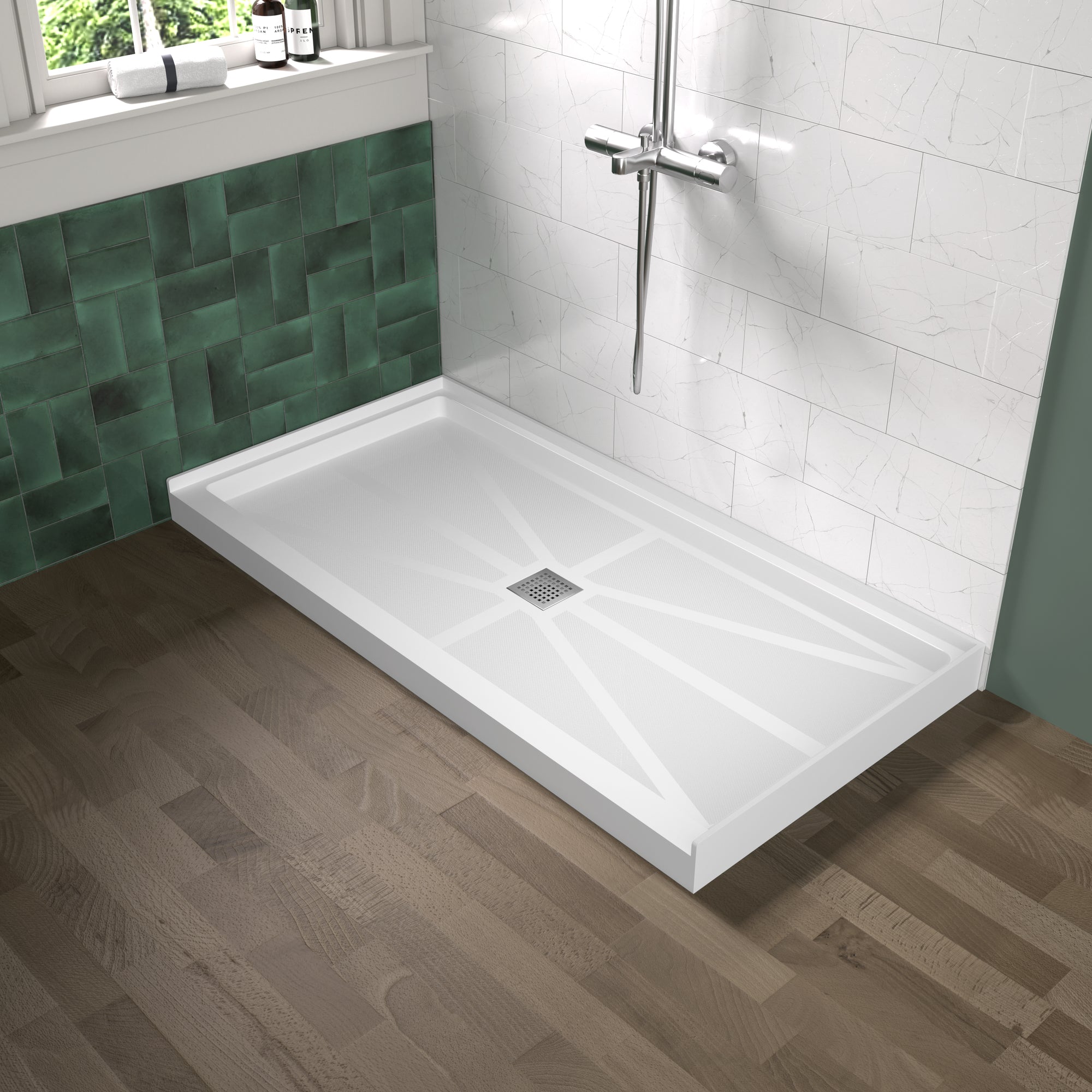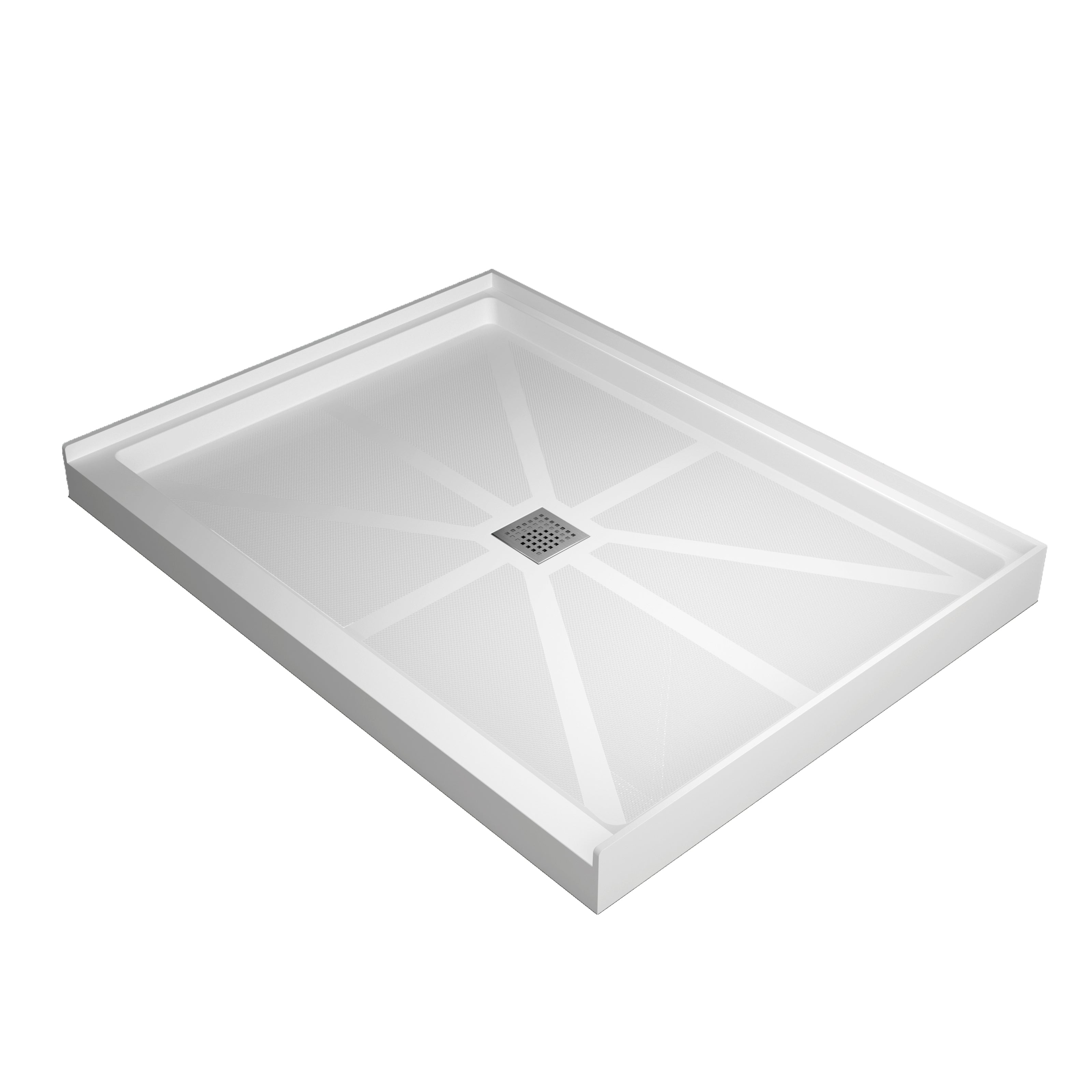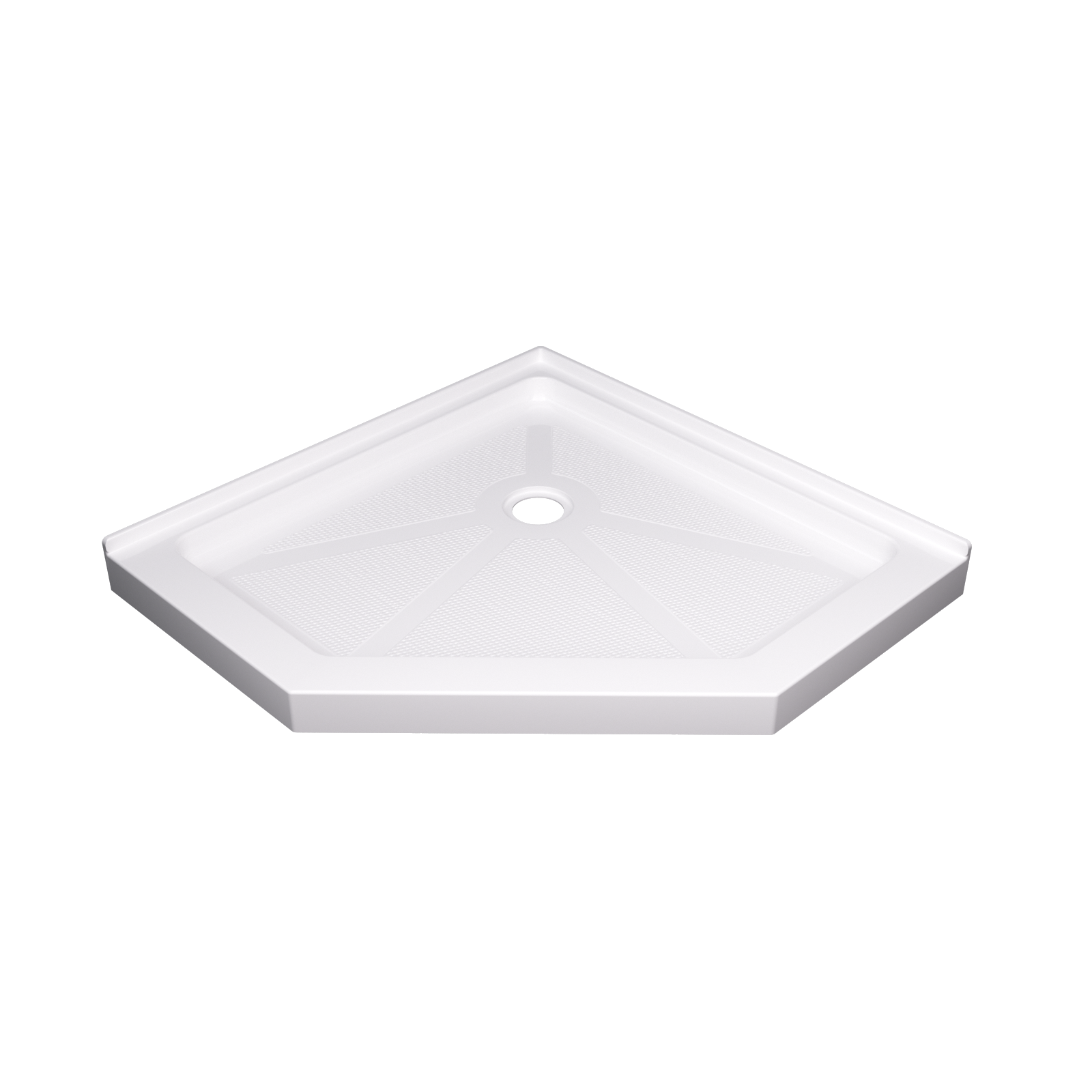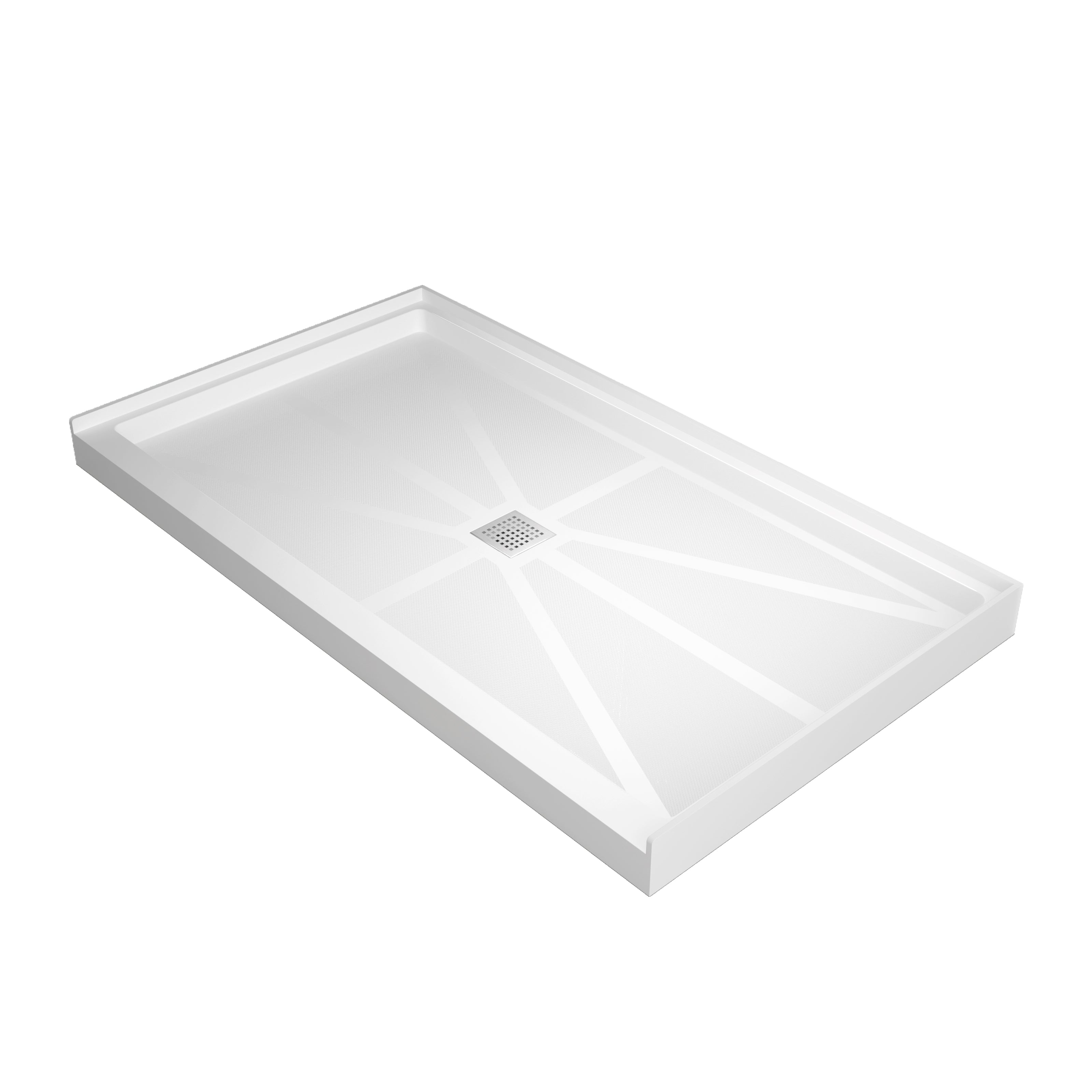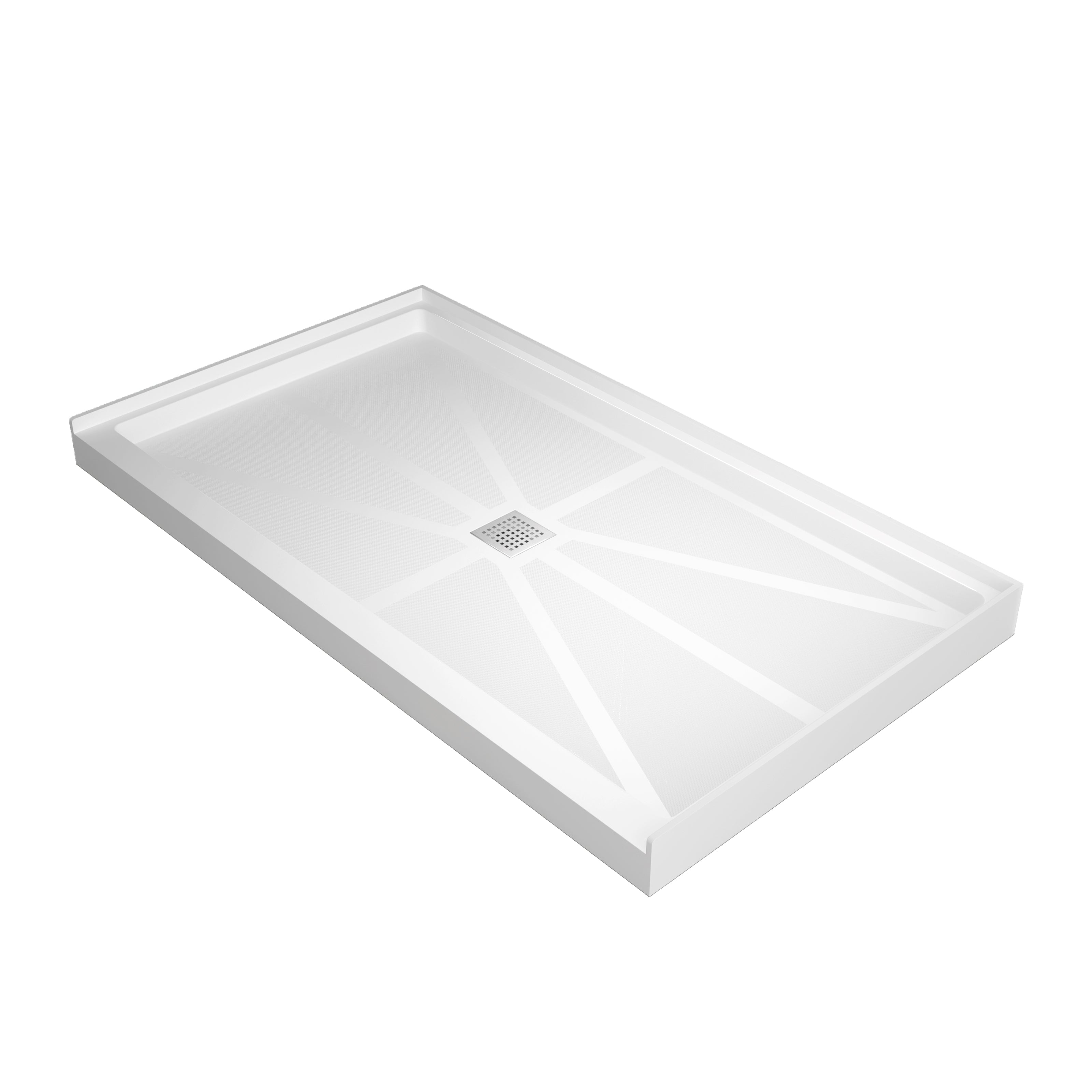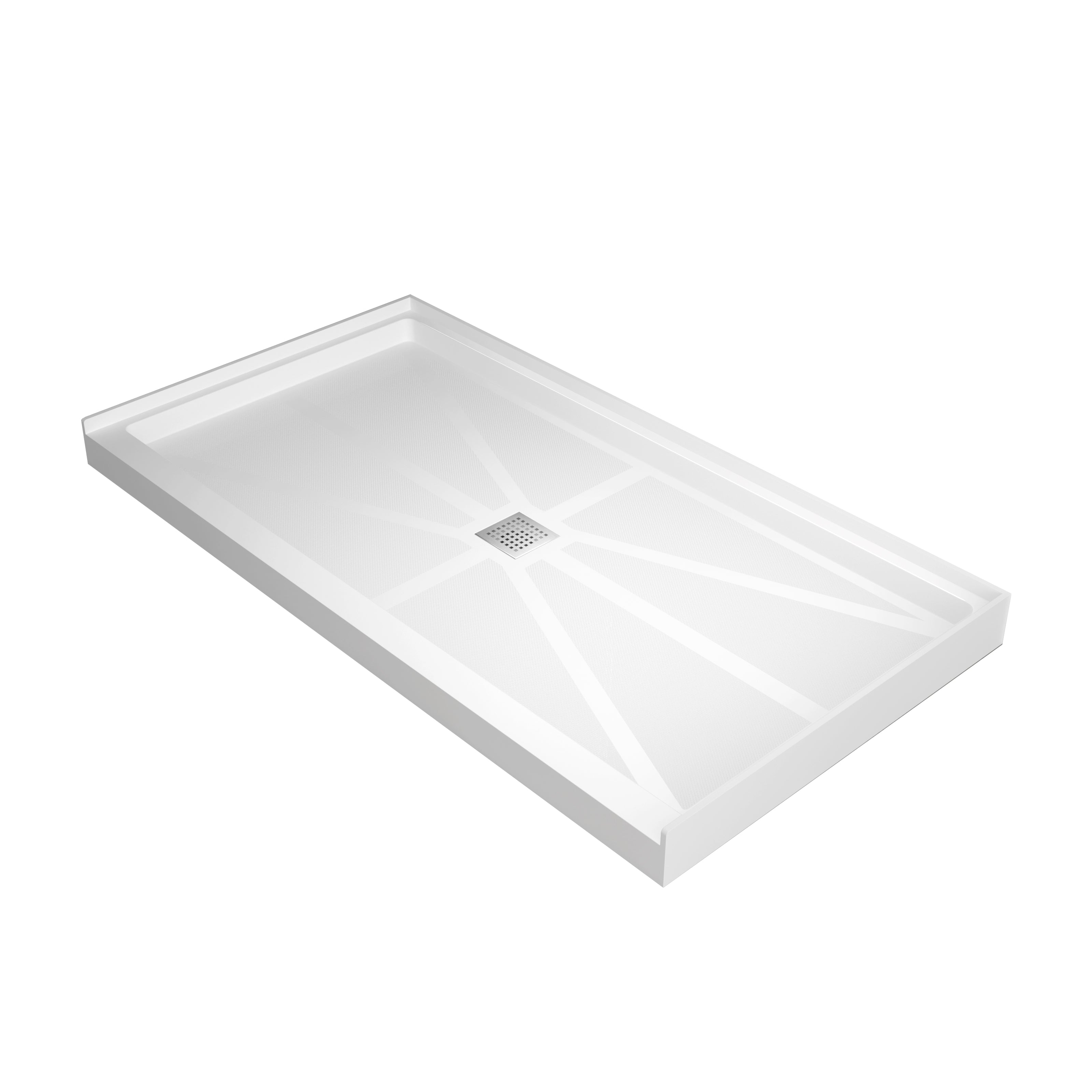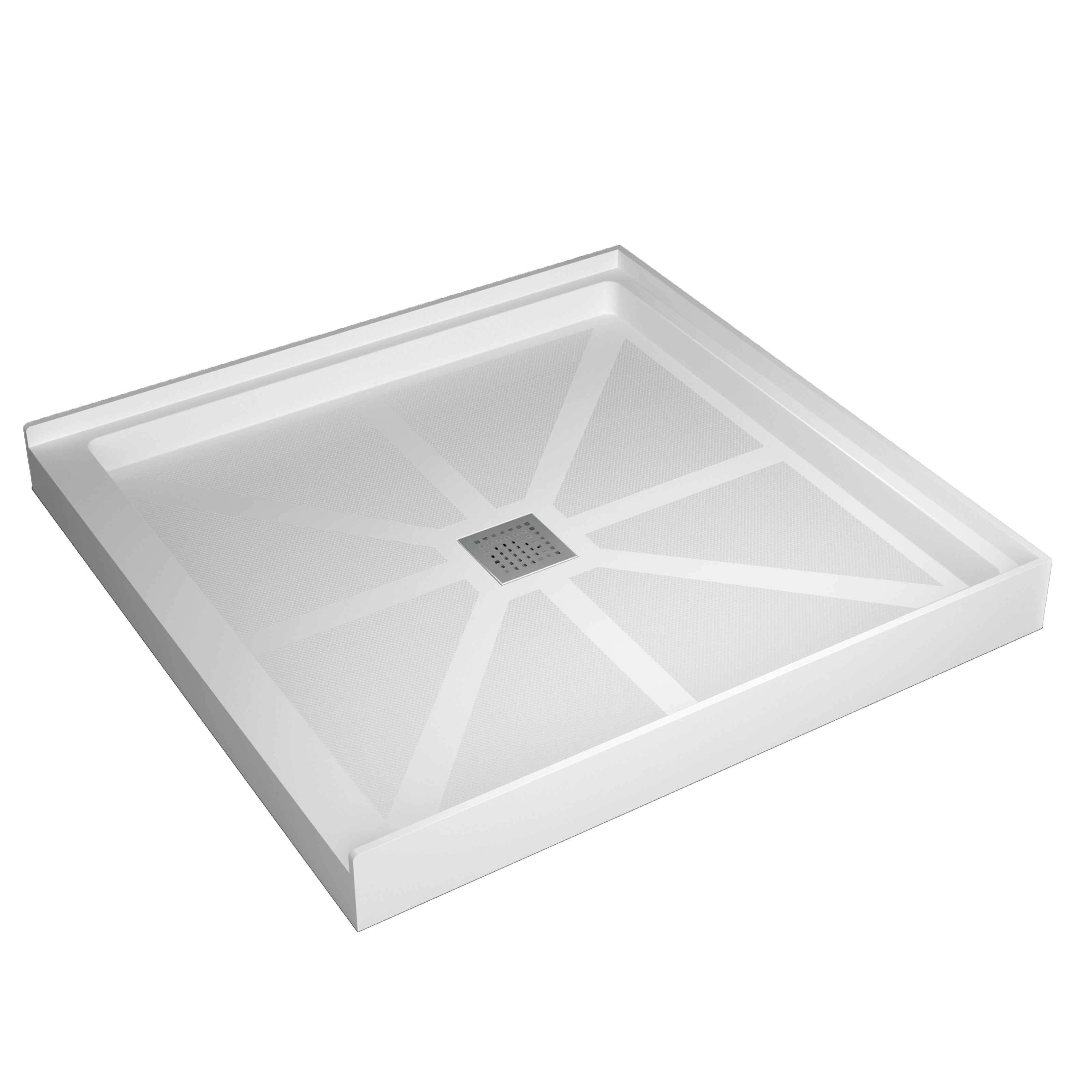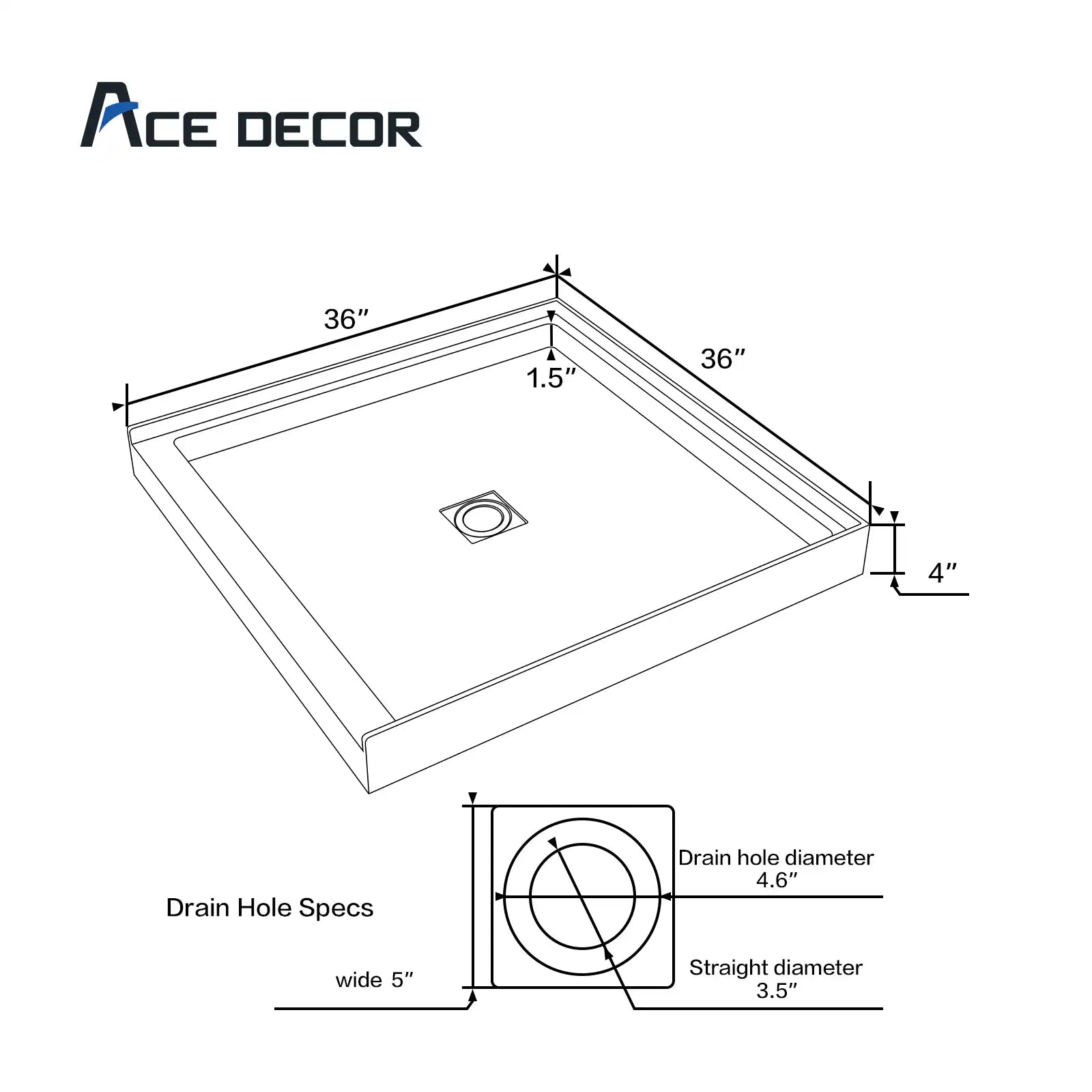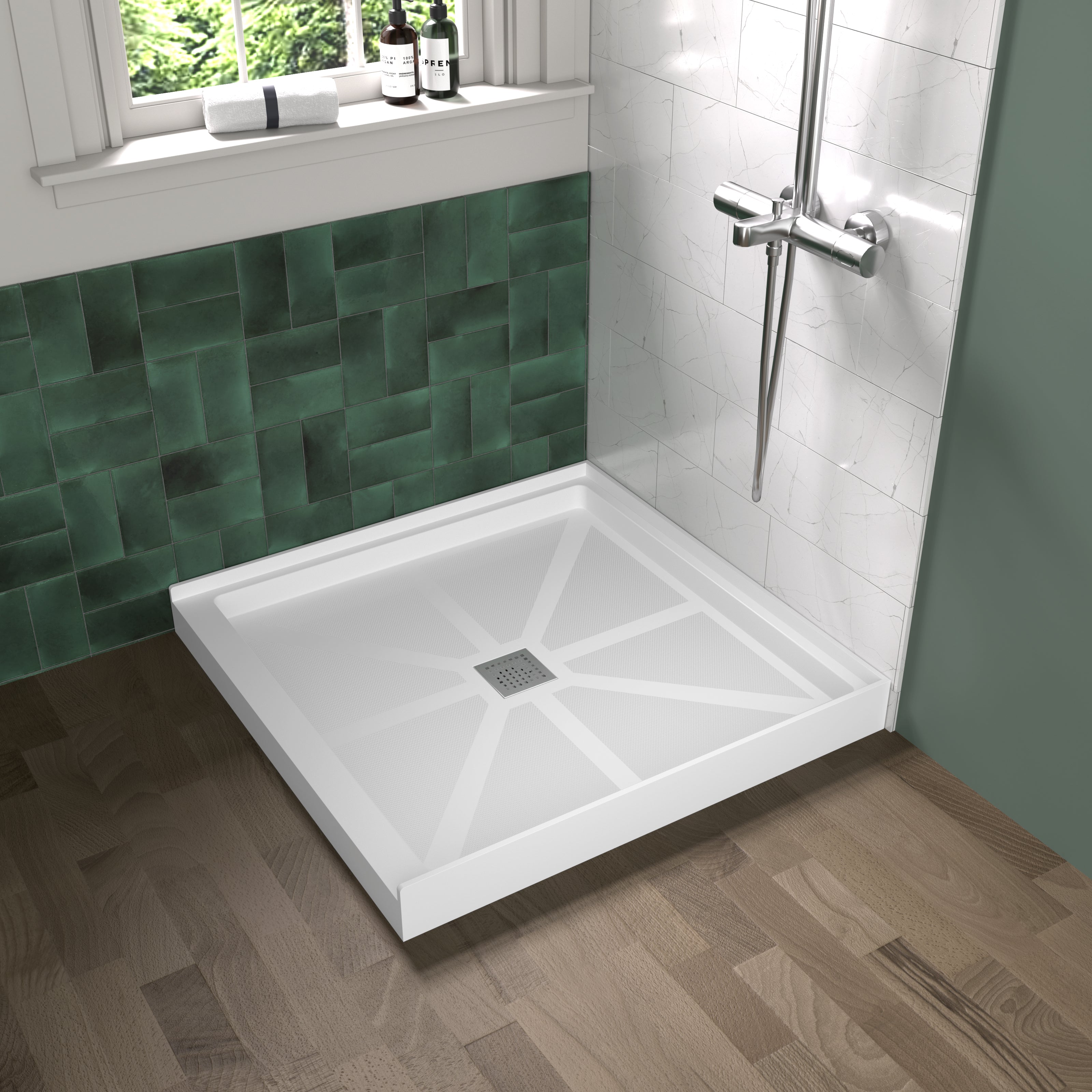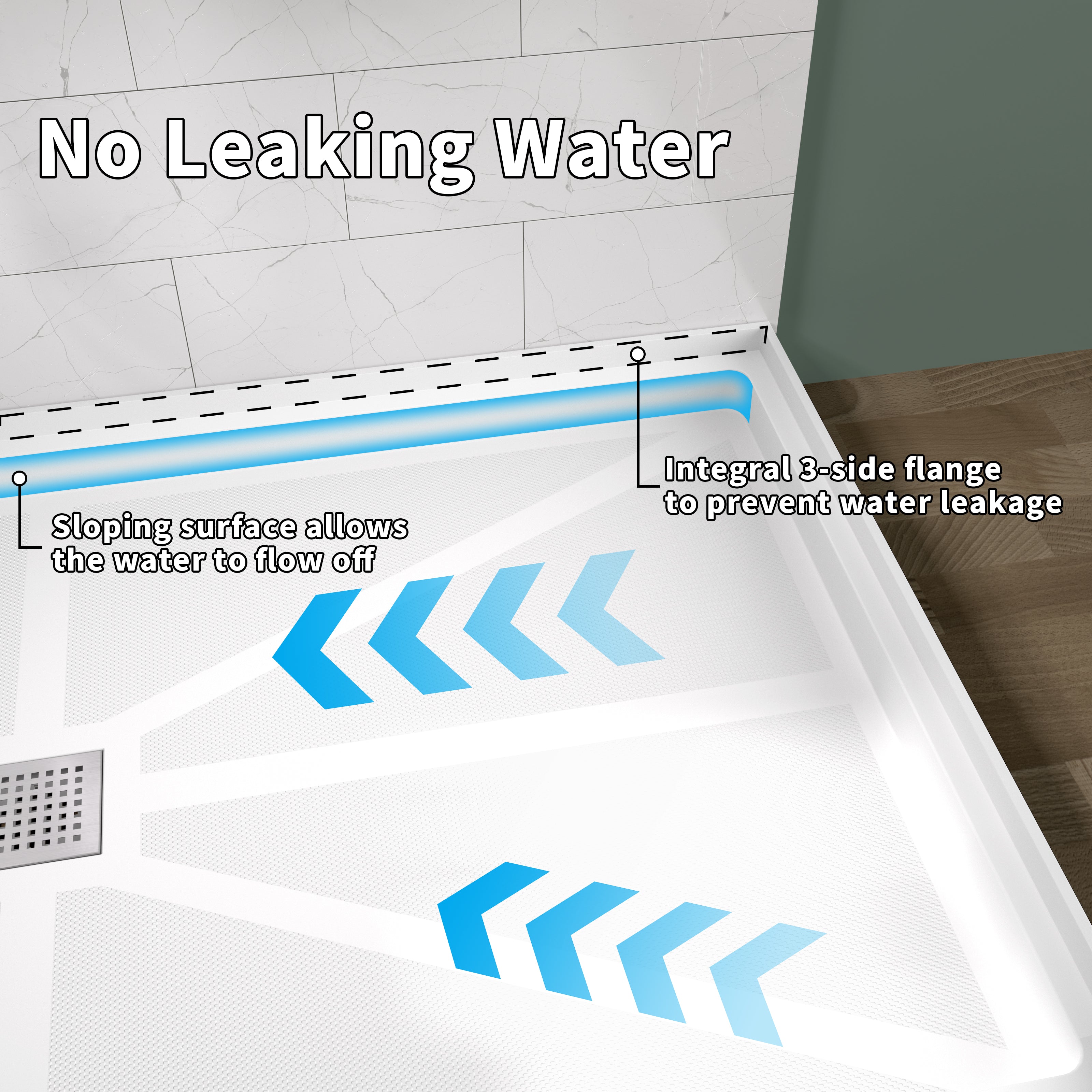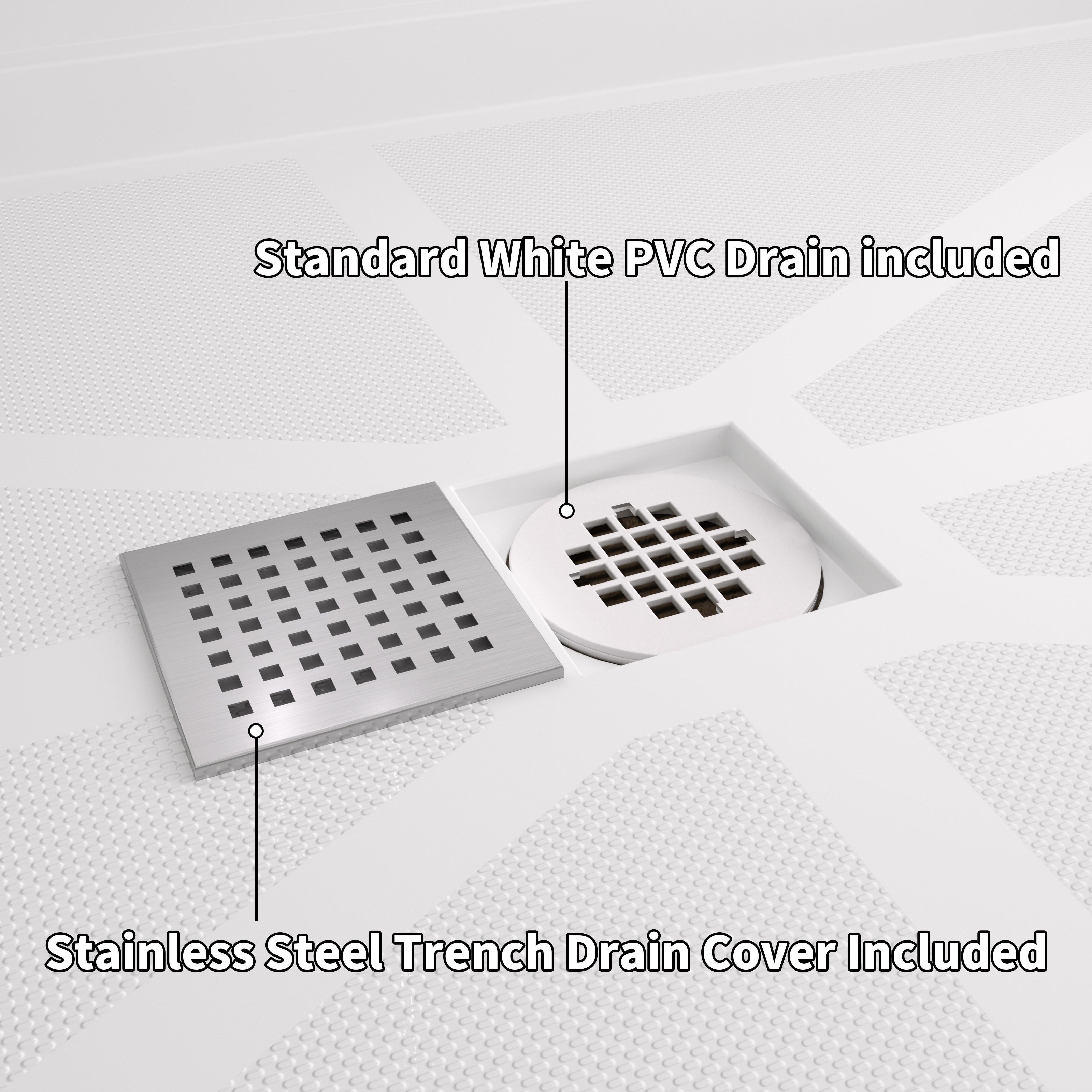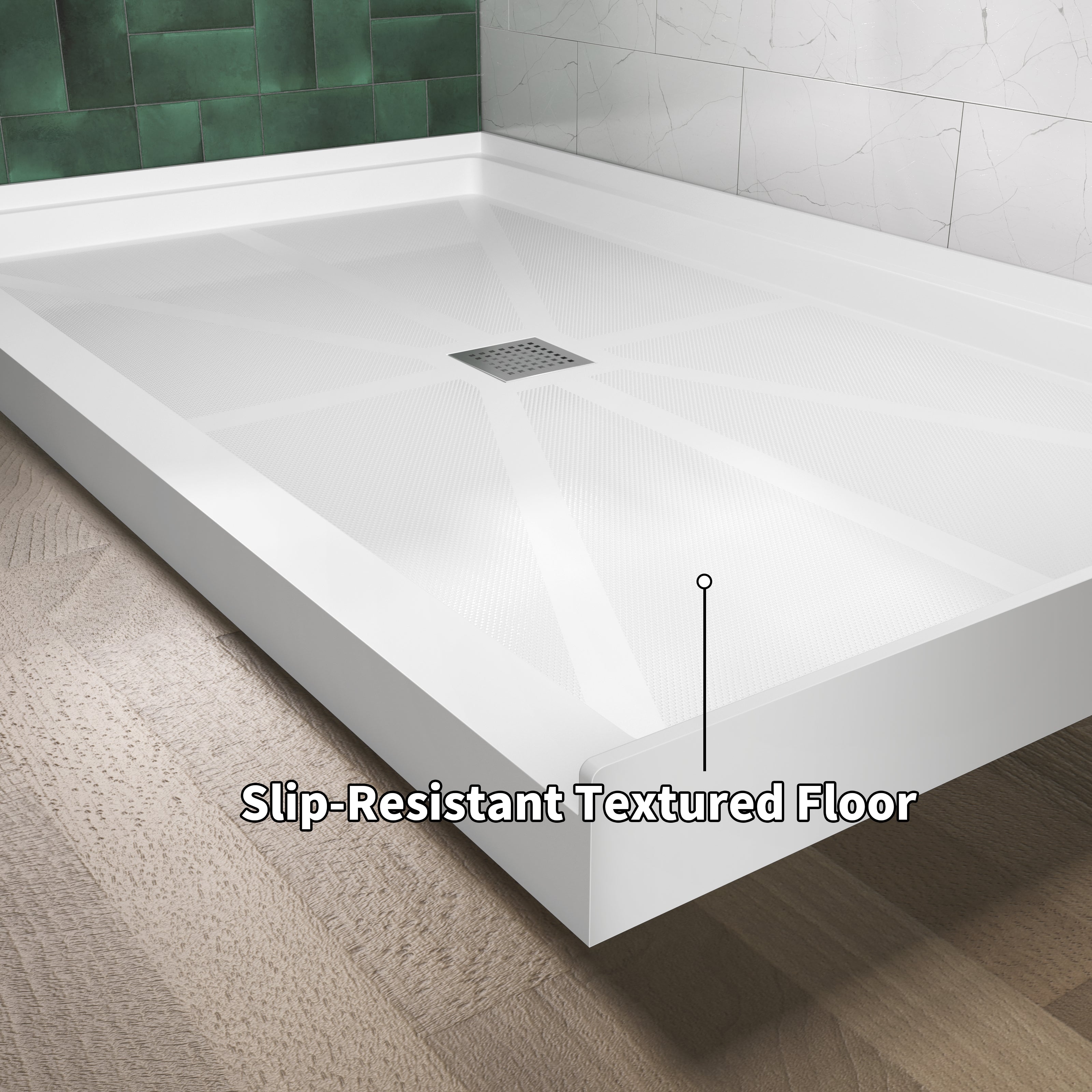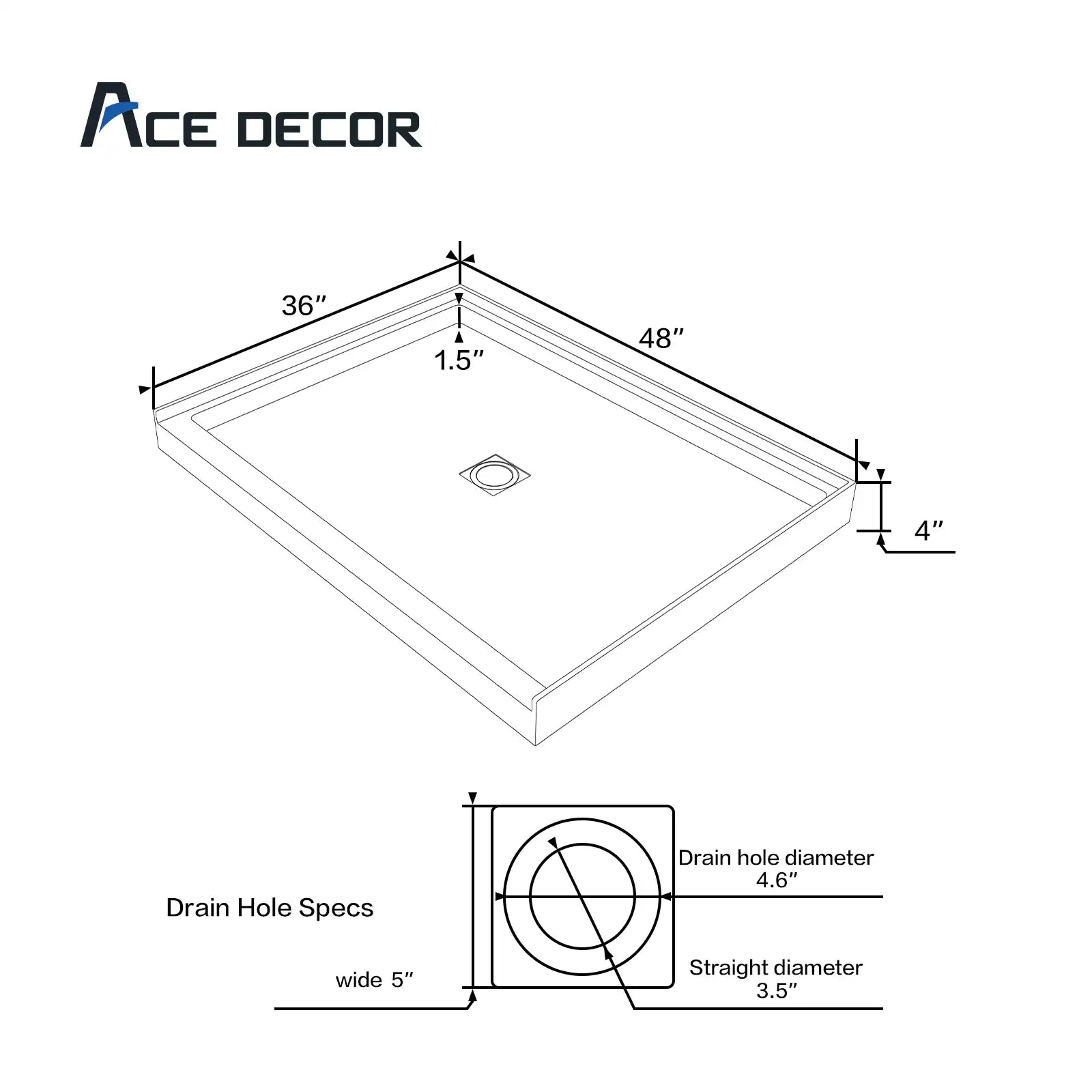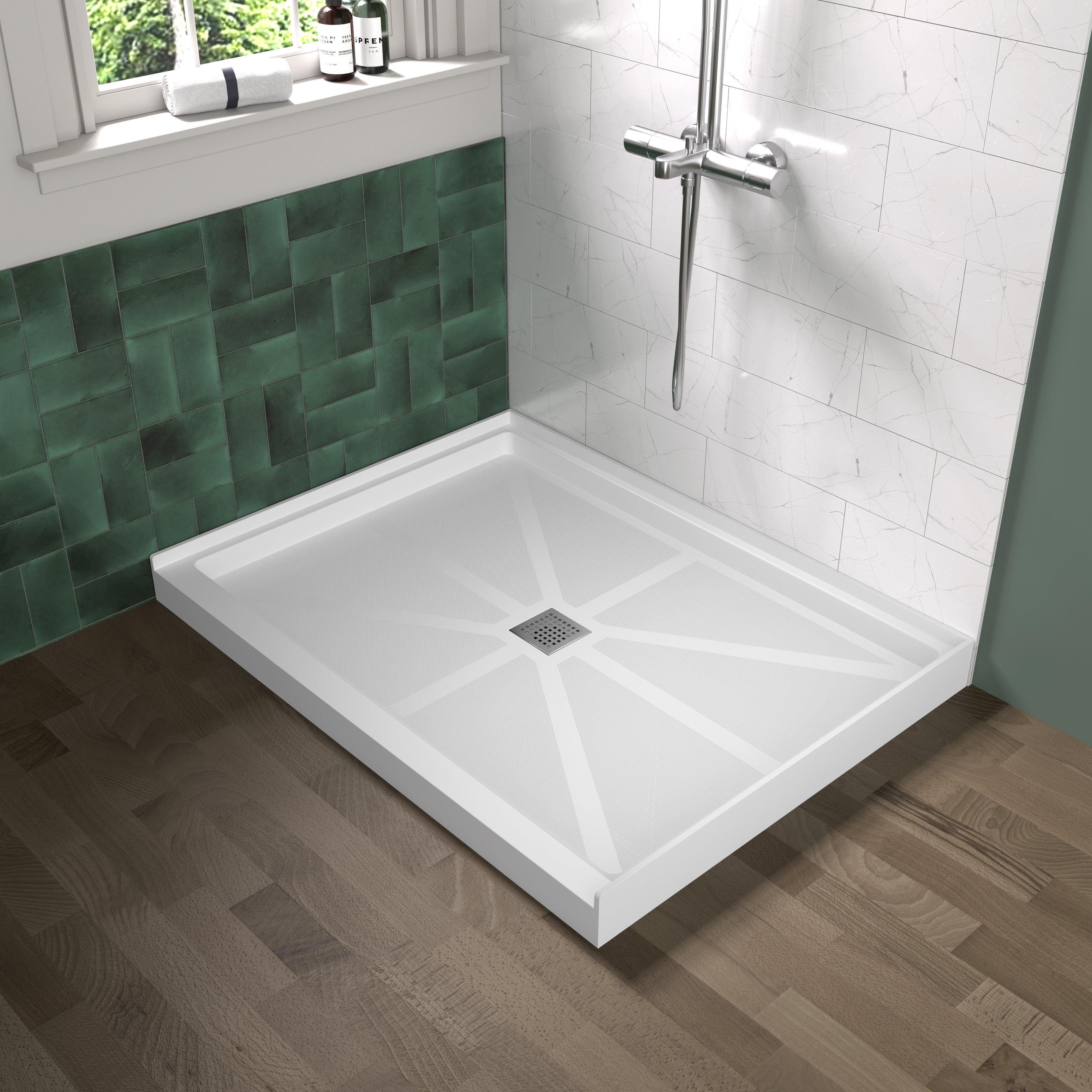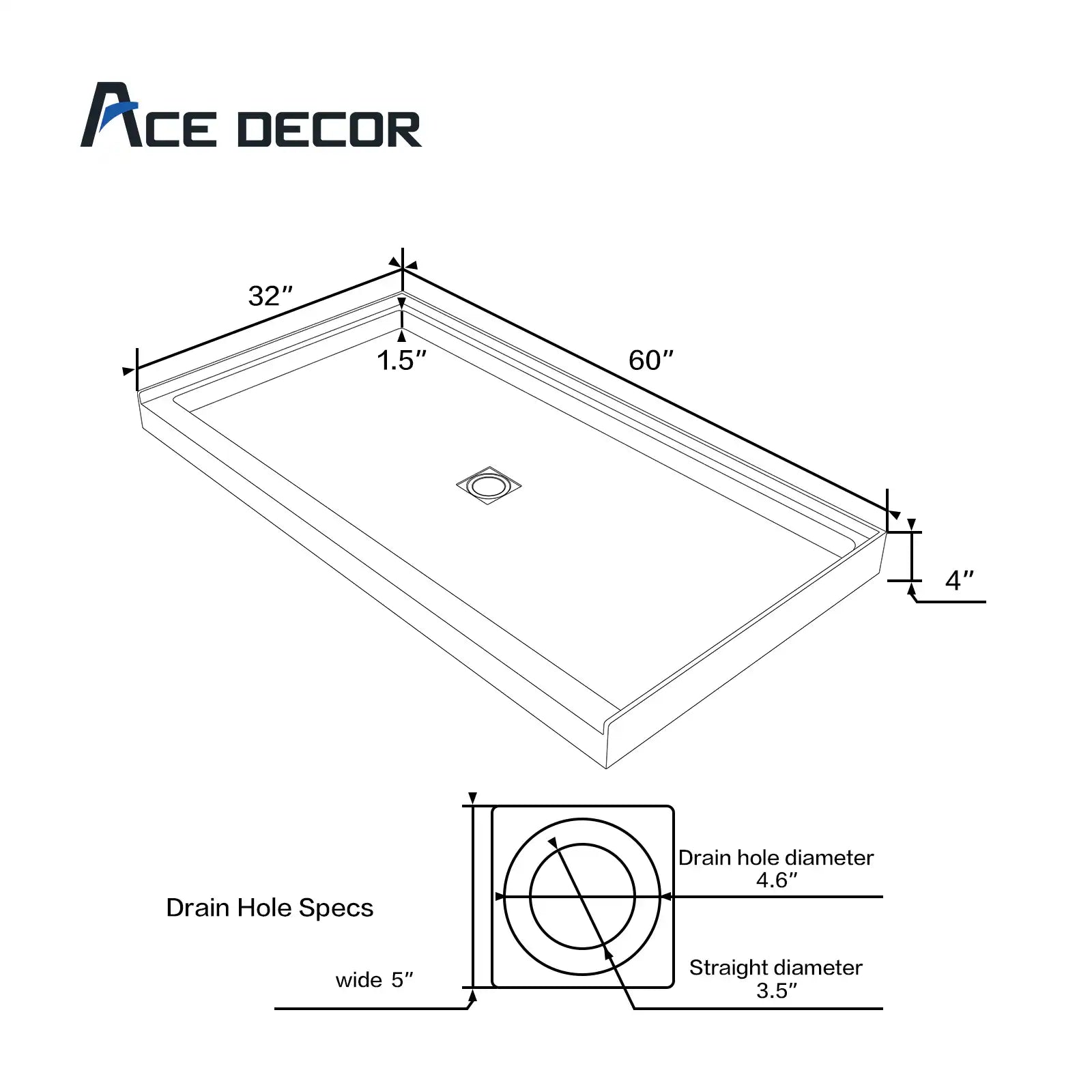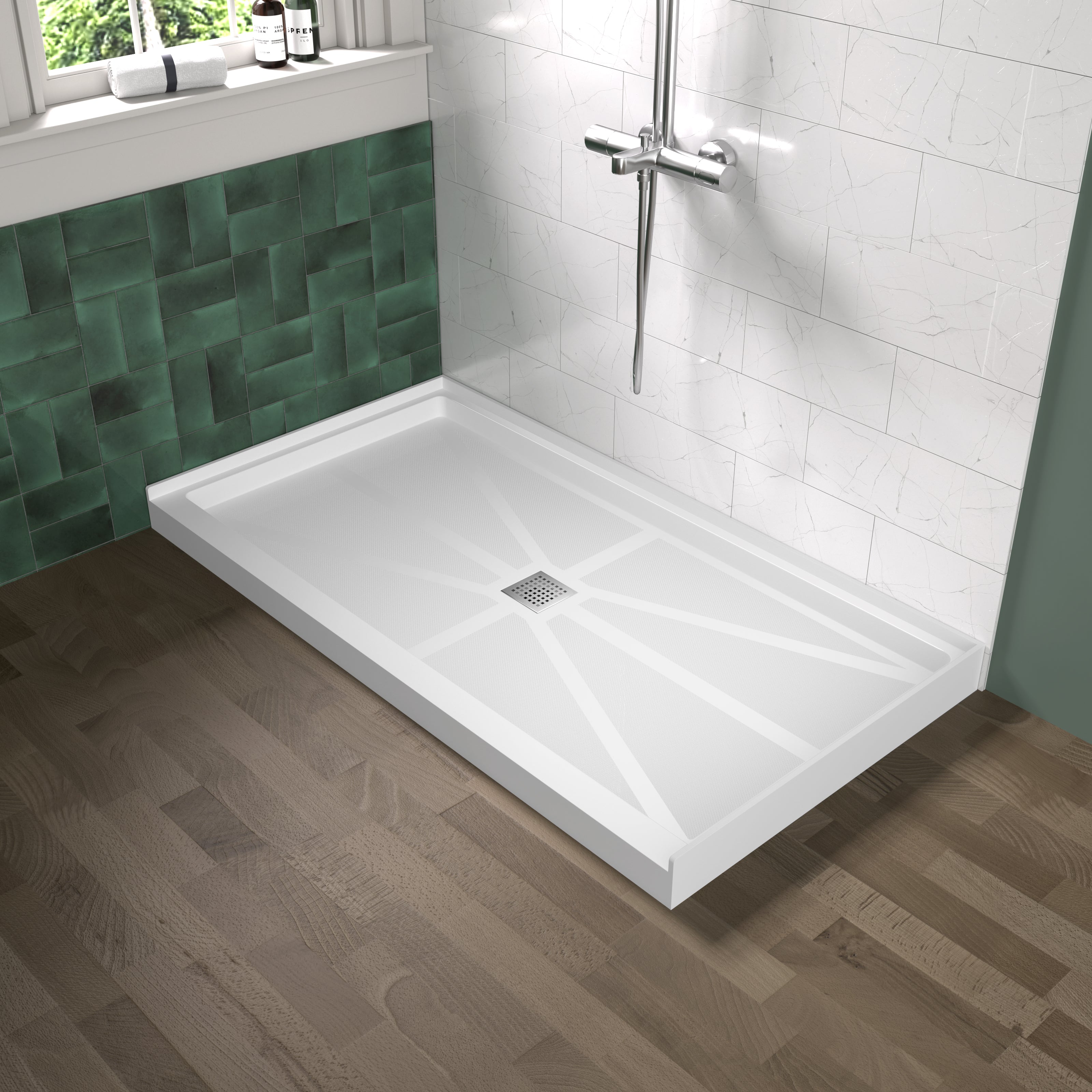Introduction
When planning a bathroom renovation, it’s easy to focus on tiles, fixtures, and lighting, but the shower pan size you choose will directly determine comfort, usability, and even the resale value of your home. A well-sized shower base not only fits your available space but also complies with building codes, accommodates your preferred showering style, and supports the overall design vision.
This guide covers the most common standard sizes in North America, explore other popular dimensions, review key regulations, discuss how to choose shower pan size correctly, and highlight additional factors such as height, material, and finish that will ensure you make an informed decision.
Table of Contents:
- Introduction
- 1. Common Standard Shower Pan Sizes in North America
- 2. Other Popular Shower Pan Sizes You Should Know
- 3. How to Choose the Right Shower Pan Size for Your Space
- 4. Key Dimensions Beyond Length and Width
- 5. Additional Factors to Consider When Buying a Shower Pan
- Conclusion
- FAQ
1. Common Standard Shower Pan Sizes in North America
In North America, certain shower pan size options have become industry standards because they work well in typical layouts and meet most homeowners’ needs.
-
32" x 32" – This compact square base is ideal for small bathrooms, half-baths, or urban apartments where every inch counts. It offers a functional showering area without overwhelming the room. However, while it’s space-saving, taller users may find it slightly tight.
-
36" x 36" – This is one of the most popular square shower pan sizes for corner or stand-alone installations in North America, valued for its balance between comfort and space efficiency.
-
60" x 32" – Perfect for converting a standard alcove bathtub into a walk-in shower. This rectangular size maximizes floor space while maintaining a familiar footprint. It’s especially popular in older homes where bathtub removal is part of an upgrade.
These dimensions are considered “safe bets” for most remodels. They ensure adequate space for movement, are widely available from manufacturers, and work with a broad range of enclosure styles.

2. Other Popular Shower Pan Sizes You Should Know
While standard sizes cover many needs, there are plenty of alternatives for homeowners seeking more comfort or unique layouts.
-
30" x 30" – This is the smallest size permitted by the International Residential Code (IRC). It offers minimal elbow room and is suited for very extra small bathrooms or secondary spaces where maximizing every inch is essential.
-
48" x 48" – Offers noticeably more space than a 36" x 36" while still fitting in many standard bathrooms. This square footprint is favored by those who want a more open feel without a massive renovation.
-
60" x 36" – A generous rectangular option for larger bathrooms, offering a spa-like experience. It’s also suitable for couples who plan to share the shower space.

3. How to Choose the Right Shower Pan Size for Your Space
Accurate measurement is always the foundation of selecting the shower pan sizes. Here are some common scenarios to help you narrow down your shower pan choice.

Small bathrooms
Lean toward compact dimensions such as 32" x 32" or 36" x 36". Larger pans may intrude into other functional areas, like the vanity zone or toilet clearance.
Alcove bathtub conversions
When replacing a standard tub, a 60" length shower pan ensures a smooth swap without reconfiguring walls or plumbing.


Corner installations
For corner configuration, neo-angle pans make efficient use of space and can open up valuable floor area for movement.
Double showers
For couples or households with shared schedules, a larger rectangular size (60" x 48" or even wider) provides comfort for two users without feeling crowded.

Always remember that the shower pan size you select must balance comfort with available clearance for other fixtures, ensuring a functional and visually pleasing layout.
4. Key Dimensions Beyond Length and Width
While length and width get the most attention, several other measurements play a crucial role in performance and installation.
-
Height (Curb vs. Curbless) – The curb height affects both water retention and ease of entry. Higher curbs improve splash control but may be inconvenient for people with mobility challenges. Curbless designs create a seamless, accessible look, ideal for universal design bathrooms.
-
Edge Width – The rim’s thickness matters when installing certain types of shower doors, especially those requiring a guide block or track. Ensuring compatibility before purchase avoids costly adjustments later.
-
Drain Placement and Size – The pan’s drain opening must match your plumbing location and diameter to prevent leaks and simplify installation.
Considering these factors early in the process can save time, money, and frustration during the remodel.
5. Additional Factors to Consider When Buying a Shower Pan
Once you’ve decided on the shower pan size, it’s time to evaluate other characteristics that impact durability, maintenance, and style.
-
Material – Acrylic pans are lightweight, affordable, and easy to clean, while solid surface stone pans offer a premium feel, exceptional durability, and a non-porous finish that resists staining.
-
Surface Texture – A non-slip textured surface can improve slip resistance. This is especially important for households with children or older adults.
-
Color Options – While classic white remains timeless, alternative colors, like soft gray or matte black which can add a design edge and coordinate with the rest of the bathroom palette.
-
Maintenance and Warranty – Check whether the surface is resistant to mold, mildew, and scratches, and review any manufacturer warranties for peace of mind.
Your choice should harmonize with your bathroom’s overall design while meeting functional needs for years to come.
Conclusion
By understanding standard and specialty sizes, considering building code requirements, and evaluating additional factors like height, material, and finish, you’ll be better equipped to select a shower base that enhances your daily routine and supports your long-term needs. Plan carefully, measure twice, and think beyond dimensions to ensure your new shower becomes one of your favorite parts of the home.
FAQ
Q1. Can I install a shower pan myself?
A: Yes, many homeowners can install a shower pan themselves if they have basic plumbing and carpentry skills. However, precision is critical — especially for leveling and sealing—to prevent leaks. If you’re unsure, hiring a professional can save time and avoid costly mistakes.
Q2. How do I maintain a shower pan for long-term use?
A: Clean it regularly with non-abrasive cleaners to prevent soap scum and mineral buildup. Avoid harsh chemicals that could damage the surface. Inspect caulking and seals periodically, and reapply as needed to maintain waterproofing.
Q3. Is a custom shower pan worth it compared to standard sizes?
A: Custom pans can be ideal for irregular spaces or unique designs, but they cost more and require longer lead times. Standard sizes are more affordable, widely available, and easier to replace if needed.
Q4. What is the smallest shower pan size allowed by code?
A: The International Residential Code specifies a minimum of 30" x 30" for interior dimensions. Anything smaller will feel cramped and may not pass building inspections.
Q5. Does the height of a shower pan really matter?
A: Absolutely. Higher curbs help keep water inside the shower but may be a barrier for people with mobility issues. Curbless designs improve accessibility and create a modern look, but require precise slope and drainage planning.
Relative Articles
Choosing a Premade Shower Base: Acrylic vs Fiberglass vs Stone Resin
Choosing a Bathroom Shower Base: Avoid Drain Location Mistakes
Shower Base Colors: How to Choose the Best Base Colors for Your Bathroom


















